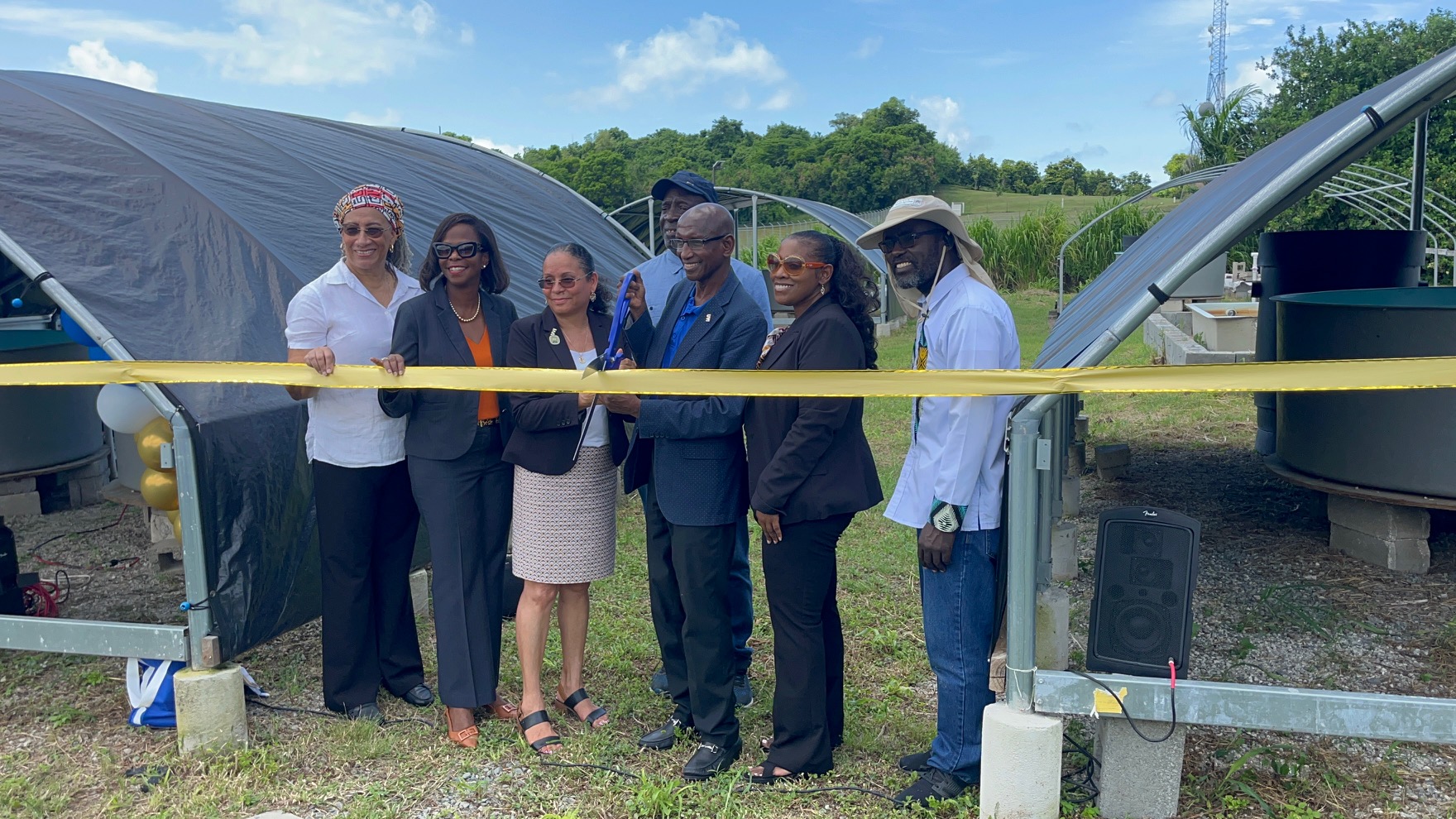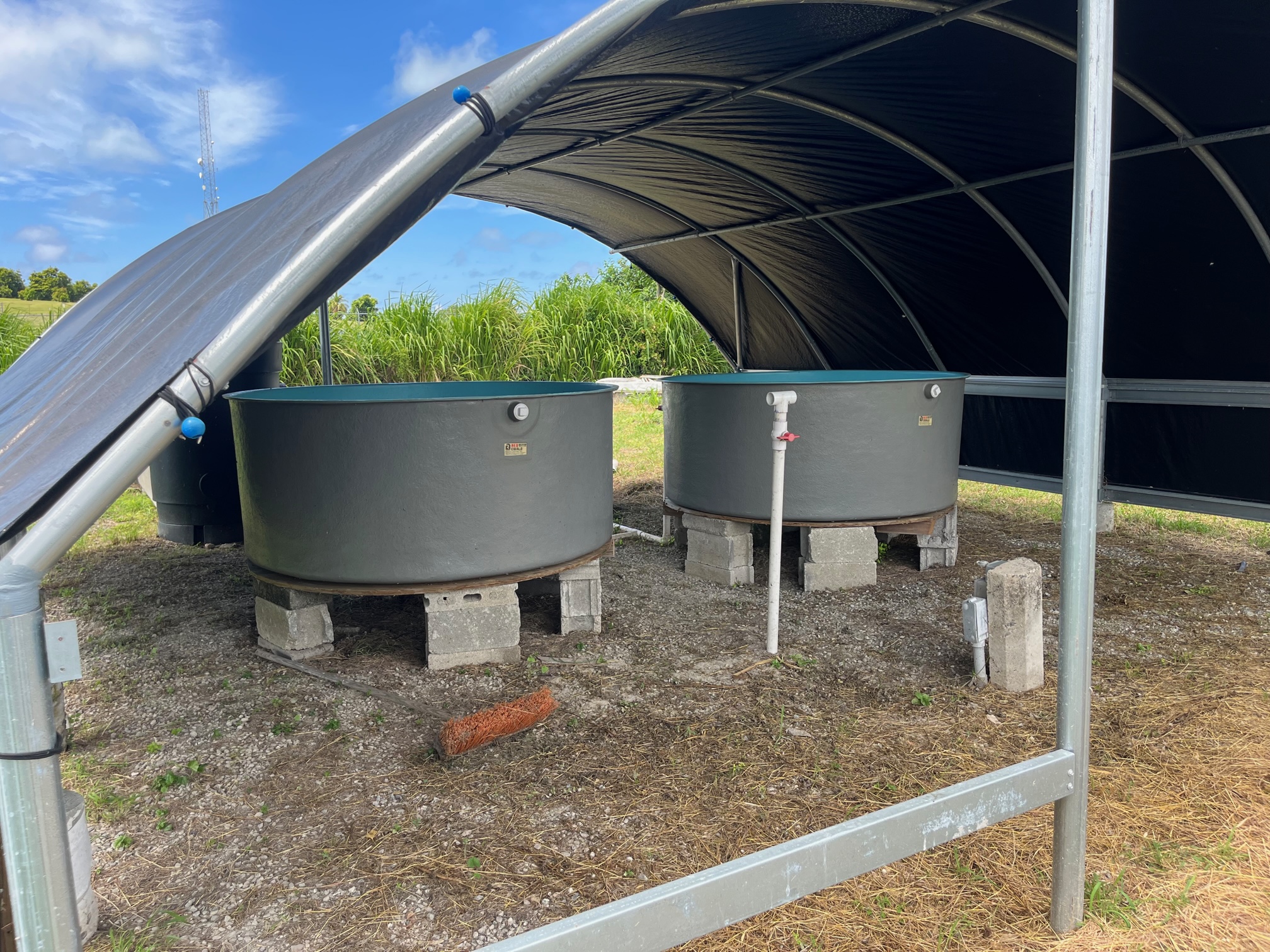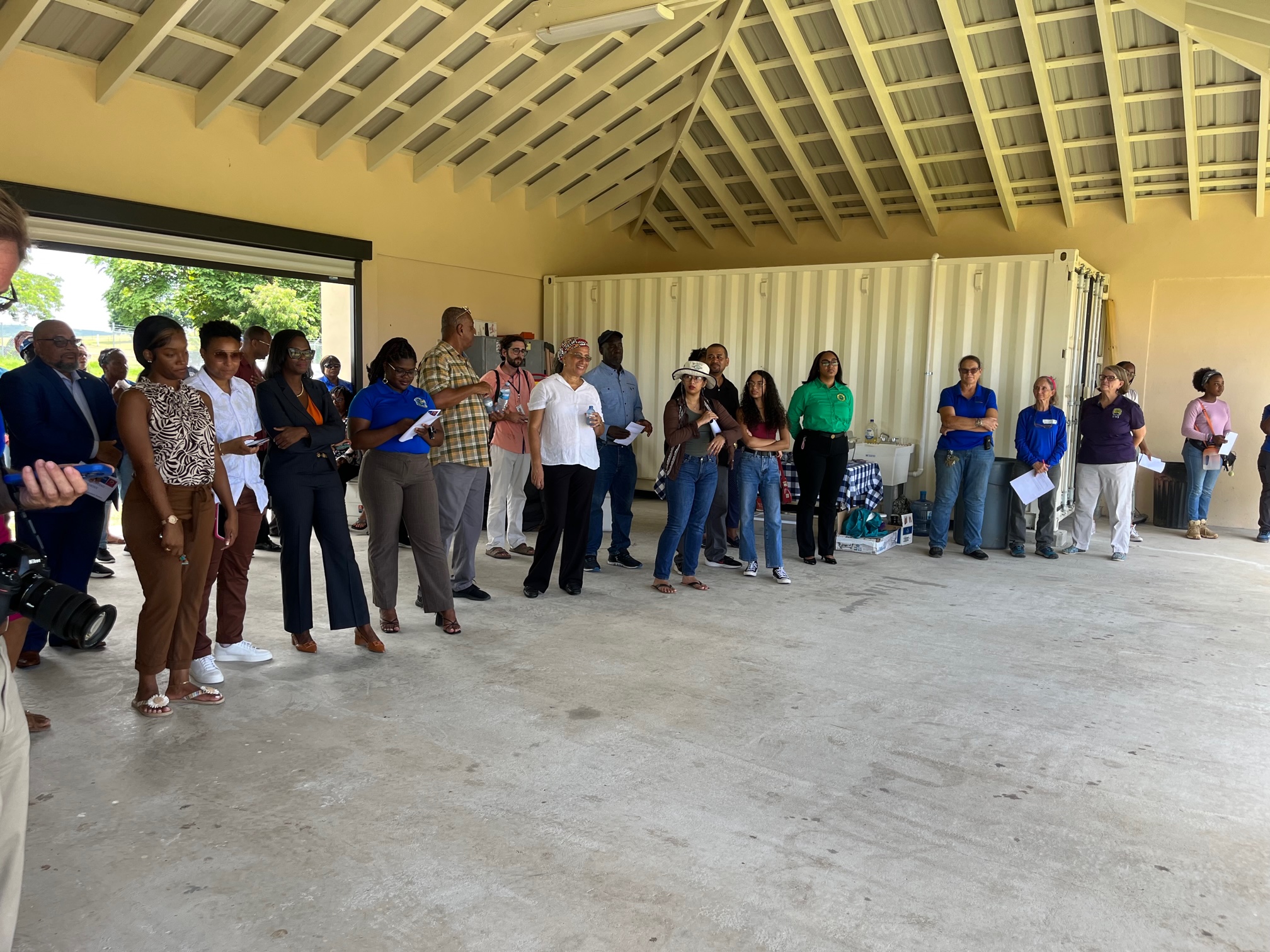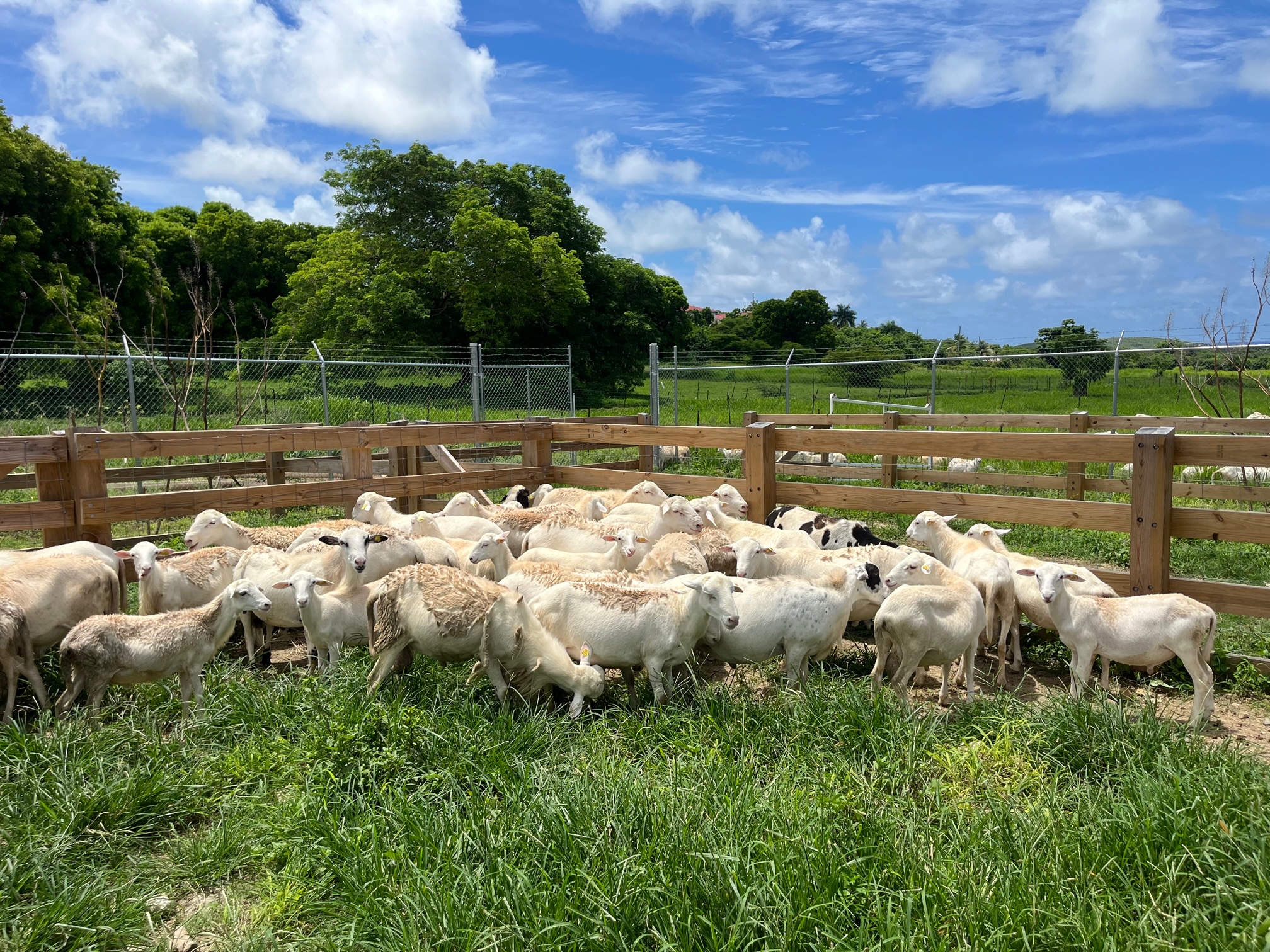
It was double the celebration on Wednesday for the University of the Virgin Islands School of Agriculture as they held their official ribbon cutting for their small ruminant livestock and aquaponics facilities. Both facilities were damaged by hurricanes Irma and Maria in 2017 and qualified for both federal and local funding.
UVI Interim Vice President Nerida Washington stepped in for the ceremony on behalf of UVI President David Hall, who was under the weather. Washington said that the renovation and rebuild of the aquaponics facility cost about $600,000, and Mence Construction was the contractor company that conducted the repairs.
“Having this facility back in operation means that full research work will resume at the agriculture experiment station in aquaponics, an area that really places UVI on the global map,” said UVI Dean of the School of Agriculture, Usman Adamu.
“We at the School of Agriculture are so excited because we were looking forward to this facility to be back in operation for a long time,” said Adamu.
Director of the Office of Disaster Recovery, Adrienne Williams-Octalien, said that she made sure she came to celebrate the win.
She spoke about building a more resilient Virgin Islands. “That’s what this project represents today, ‘resiliency,’” she said. “We have food, conservation, sustainability. These are all the commitments, the necessary steps that need to happen to be prepared so that when a disaster strikes, we have a plan.”
Henry Awika, the interim assistant director and research assistant professor at the School of Agriculture, presented the aquaponics facility and asked the community for their understanding that it may not look fully completed.
“We are trying to design a way that will be responsive to the community. It is a very expensive facility to run and therefore we are looking for ways to make the costs manageable in a way that can appeal to the community,” said Awika.
“As you walk around, please don’t feel discouraged,” he said.
Awika said that they are designing a way for the students to benefit and see reasons to extend that knowledge in the communities they come from. Now that they have the funding, he anticipates the completion will take another three to four months.
The tanks are designed for fish to be fed in them, and the waste is flushed out into a plant bed, where the plant absorbs the nutrients. They also have a system to remove the waste from the fish into a tank and direct it to a settling pond.
There are six aquaponics stations, and the tanks can accommodate 600 fish at a time. They are aiming for tilapia as the fish of choice.

Later, attendees moved over to the official ribbon cutting for the Small Ruminant Livestock Facility. The project started in March 2022 when the old pen was removed and replaced with the facility on the southeast end of the university. It houses 206 sheep and has eight pens at the scale house.
The building includes an office, locker, container for storage, restroom, hay barn and scale house. Sue Lakos, research analyst III, who referred to the facility as the “sheep farm,” said, “We pride ourselves on the fact that we have sheep here that are from two different breeds. The St. Croix white hair sheep that was developed here on the island of St. Croix to meet the needs of the farmers. We also have dorper crossbreed that is black and white.”

So far, they’ve done research on heat resistance and profitability. “The knowledge we gain for this will benefit the local farmers. We have a booming market for sheep meat on St. Croix. We sell animals to the public both for breeding and for the meat,” said Lakos.

As a fine touch to the occasion, Lakos offered some fine dining of quinoa, pastries, and, of course, a sample of cooked sheep straight from the facility.





